Imagination Announces A-Series GPU Architecture: "Most Important Launch in 15 Years"
by Andrei Frumusanu on December 2, 2019 8:00 PM ESTHyperLane Technology
Another new addition to the A-Series GPU is Imagination's “HyperLane” technology, which promises to vastly expand the flexibility of the architecture in terms of multi-tasking as well as security. Imagination GPUs have had virtualization abilities for some time now, and this had given them an advantage in focus areas such as automotive designs.
The new HyperLane technology is said to be an extension to virtualization, going beyond it in terms of separation of tasks executed by a single GPU.
In your usual rendering flows, there are different kinds of “master” controllers each handling the dispatching of workloads to the GPU; geometry is handled by the geometry data master, pixel processing and shading by the 3D data master, 2D operations are handled by the 2D data, master, and compute workloads are processed by the, you guessed it, the compute data master.
In each of these processing flows various blocks of the GPU are active for a given task, while other blocks remain idle.
HyperLane technology is said to be able to enable full task concurrency of the GPU hardware, with multiple data masters being able to be active simultaneously, executing work dynamically across the GPU’s hardware resources. In essence, the whole GPU becomes multi-tasking capable, receiving different task submissions from up to 8 sources (hence 8 HyperLanes).
The new feature sounded to me like a hardware based scheduler for task submissions, although when I brought up this description the Imagination spokespeople were rather dismissive of the simplification, saying that HyperLanes go far deeper into the hardware architecture, with for example each HyperLane having being able to be configured with its own virtual memory space (or also sharing arbitrary memory spaces across hyperlanes).
Splitting GPU resources can happens on a block-level concurrently with other tasks, or also be shared in the time-domain with time-slices between HyperLanes. Priority can be given to HyperLanes, such as prioritizing graphics over a possible background AI task using the remaining free resources.
The security advantages of such a technology also seem advanced, with the company use-cases such as isolation for protected content and rights management.
An interesting application of the technology is the synergy it allows between an A-Series GPU and the company’s in-house neural network accelerator IP. It would be able to share AI workloads between the two IP blocks, with the GPU for example handling the more programmable layers of a model while still taking advantage of the NNA’s efficiency for the fixed function fully connected layer processing.
Three Dozen Other Microarchitectural Improvements
The A-Series comes with other numerous microarchitectural advancements that are said to be advantageous to the GPU IP.
One such existing feature is the integration of a small dedicated CPU (which we understand to be RISC-V based) acting as a firmware processor, handling GPU management tasks that in other architectures might be still be handled by drivers on the host system CPU. The firmware processor approach is said to achieve more performant and efficient handling of various housekeeping tasks such as debugging, data logging, GPIO handling and even DVFS algorithms. In contrast as an example, DVFS for Arm Mali GPUs for example is still handled by the kernel GPU driver on the host CPUs.
An interesting new development feature that is enabled by profiling the GPU’s hardware counters through the firmware processor is creating tile heatmaps of execution resources used. This seems relatively banal, but isn’t something that’s readily available for software developers and could be extremely useful in terms of quick debugging and optimizations of 3D workloads thanks to a more visual approach.


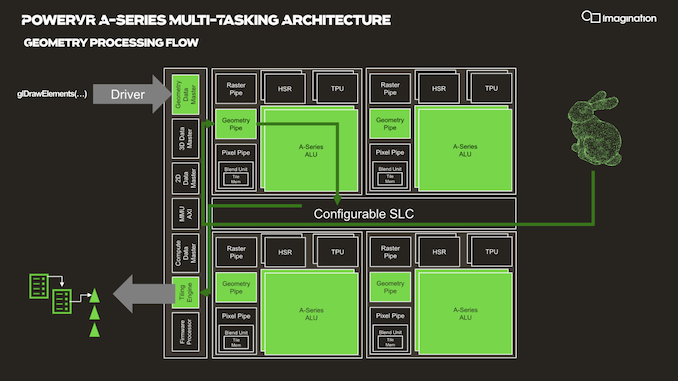
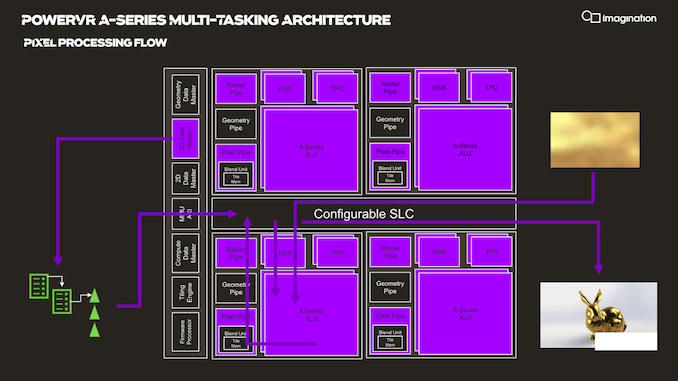
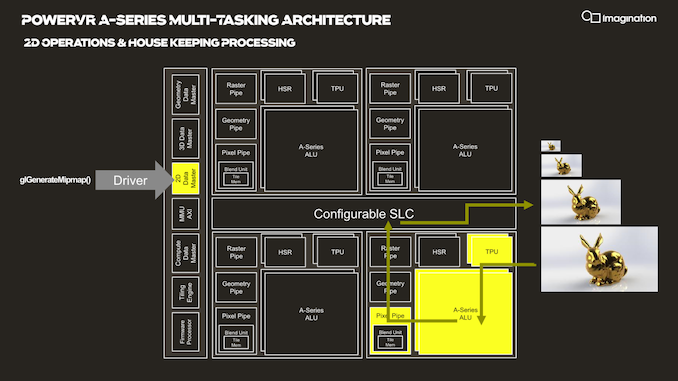
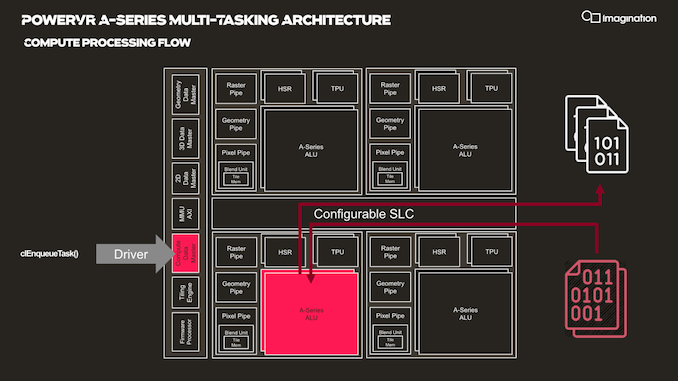
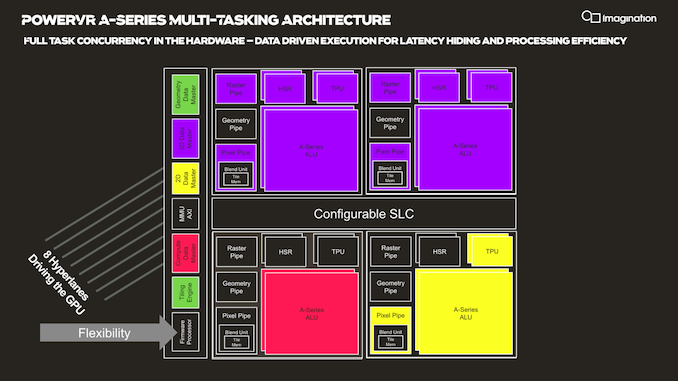
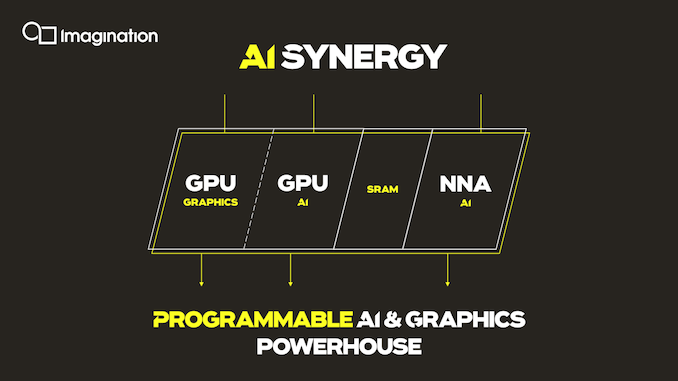
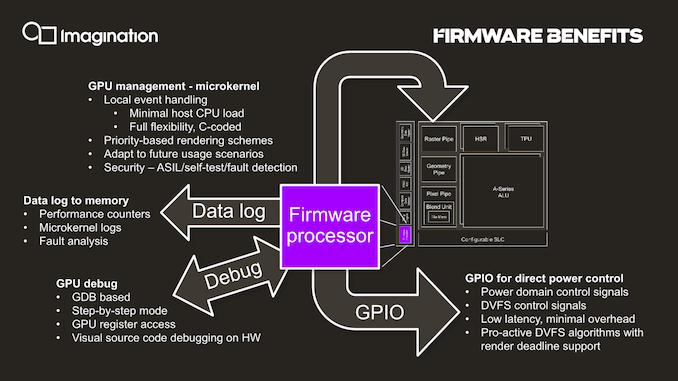
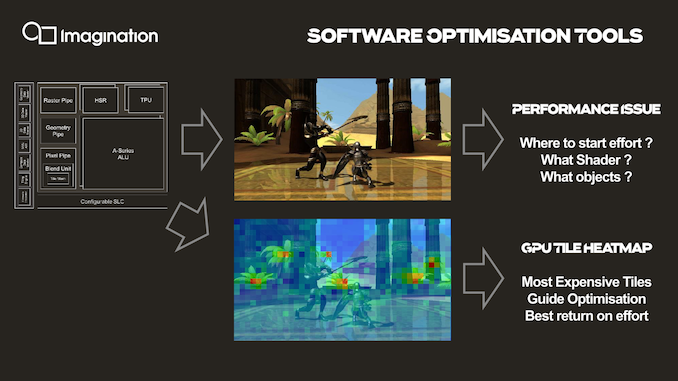








143 Comments
View All Comments
RaduR - Tuesday, December 3, 2019 - link
Andrei Frumusanu was working for them . So maybe he has more info on how this is going to develop .The only downside for ImgTec is that they are depending on CPU vendors. So if they cannot sell this design to anyone ....
They tried with MIPS but for whatever reason MIPS lost traction . Most probably they wer eunable to sell the design .
Please understand that ImgTec is a very very small company that is fighting in fact with ARM . They are not Mediatek nor Qualcomm . In this market there is a lot of completion.
We have : Vivante in the lowend. Broad iMM has Videocore , ARM sells MALI together with Cortex designs. So how can ImgTec survive ?
I see the only option would have been MIPS + PowerVR or to be taken over by a company like Mediatek . I am still wondering why Intel did not buy them for the cheap or Mediatek .
Andrei Frumusanu - Tuesday, December 3, 2019 - link
I left back in November 2017 and avoided coverage till now due to any conflict of interest. The A-Series is beyond the horizon of future knowledge I had from back then so it was new to me, I don't have any more info beyond my estimates that I wrote.Vivante is effectively dead and so is the Videocore lineup, the best case scenario here is a 50/50 split with Arm. The CPU I thing I don't think it's a limitation as long as the GPU in fact does deliver on competitive PPA.
ZolaIII - Tuesday, December 3, 2019 - link
I wouldn't exactly say Unisoc adoption of it would have a small impact (tho they are still recovering from bad Intel's influence) nor would I write of possibility of HiSilicone adoption (more so as they are keen on ARM for US ban compliance & after all Chinese IPO owns Imagination now). Actually this is going so far right now that RISC V foundation is moving out of US to neutral grounds to ensure that same fate that struck the ARM cannot happen to them.vladx - Wednesday, December 4, 2019 - link
ARM is also planning to move remaining R&D centers from US to avoid any chance of US ban in the future.vladx - Wednesday, December 4, 2019 - link
Did anyone use Vivante designs in their SoCs in the past 3 years or so?GruenSein - Tuesday, December 3, 2019 - link
Uncertainties about ImgTech's claims and promises aside, I am wondering who is supposed to be the customer.Apple is developing their own GPUs now.
Samsung is going with AMD's RDNA.
Qualcomm has their Adreno GPU.
HiSilicon is using ARM's Mali.
I fear that this will be a very niche product unless it absolutely dominates all other solutions.
Raqia - Tuesday, December 3, 2019 - link
If they remain independent, I think it'll be anyone who wants something better than Mali or Intel that don't have their own GPU or haven't partnered up, so with Intel also designing their own GPU cores I guess the main customer would be Mediatek, and a handful of other even smaller licensees like Broadcom for things like its Raspberry Pi SoC, NXP, STM etc.When compared to CPU designs which are becoming increasingly commoditized by ARM's freely licensed and very good SIP cores (with only nVidia and Apple doing their own custom cores in volume going forward), efficient GPU cores continue to be highly specialized and a well sought after technology. Imagination would also be a layup acquisition for any company besides Apple, AMD, or Qualcomm, so I could Intel, Samsung or ARM buying them in the future.
Raqia - Tuesday, December 3, 2019 - link
Also Marvell and other TV / automakers.name99 - Tuesday, December 3, 2019 - link
Amazon made a big deal about GPU support and AI inference in their Graviton 2 announcement. They might be an unexpected client?(For that to work, however, IMG might have to be more flexible in terms of being willing to scale up/drop functionality to match AMZ's needs. They were apparently unwilling to be that flexible for Apple... But hey, near death experience can sometimes teach...)
mode_13h - Wednesday, December 4, 2019 - link
I'm sure Amazon is just talking about Nvidia and possibly AMD. Nvidia is officially supporting their software stack on ARM, and AMD's is opensource and could be recompiled for ARM (hey, it works on POWER!).